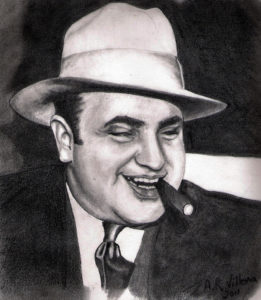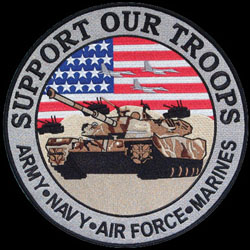A crime spree in Little Rock, Arkansas, this month included several drive-by shootings followed by gunfire at a nightclub a mile from the state Capitol building. Twenty-eight people were injured in the overnight shooting at the Power Ultra Lounge.
After the nightclub shooting, the governor expressed concern over the intensifying “crime problem” in Little Rock, the largest city in Arkansas, located in the center of the state. In response, the governor formed a multiagency law enforcement task force to address the issue.
Those familiar with the Natural State’s history will tell you that this is far from the first time that Central Arkansas has made news for its “crime problem.”
One high-profile example is the headlines that Mafia figures made over the decades by visiting the resort town of Hot Springs, where unlawful activity flourished while public officials looked the other way, allowing casino gambling and prostitution to thrive illegally but openly.
Another example is the revelation that former commercial airline pilot Barry Seal, a cocaine trafficker working with the murderous Medellin Cartel in Colombia, used the remote mountain airport in tiny Mena, Arkansas, as his outlaw hub, transporting planeloads of illegal narcotics into the U.S.
A movie about Seal and his criminal exploits, starring Tom Cruise, is set to be released in September. You can view the website for the film, originally called “Mena” but now titled “American Made,” by clicking here.
In Hot Springs, about an hour west of Little Rock, horse racing and some gambling, including video poker, are allowed at the historic Oaklawn racetrack, but the bustling casinos that made the Spa City a hot spot for regular tourists and vacationing Mafia figures were shut down for good by reformist Gov. Winthrop Rockefeller in 1967, after some 40 years in operation.
Every major gangster and Mafia figure in the country of that era, including Al Capone, Benjamin “Bugsy” Siegel and Carlos Marcello, visited Hot Springs. Many stayed at the opulent Arlington Hotel.
For those wanting to see what the Arlington looks like these days, I posted a video on my YouTube channel, showing the outside of the hotel. A second video shows the inside.
One frequent visitor to the Arlington, Mafia vice lord Charles “Lucky” Luciano, was detained in Hot Springs in the mid-1930s while evading a prostitution-rackets arrest in his hometown, New York City.
The arrest in Hot Springs came in a roundabout way.
To his surprise, a New York detective hunting down a different criminal hiding out in Hot Springs bumped into Luciano as the mob leader was strolling down the main drag with a crooked, friendly local cop.
The arrest led to news stories about how Luciano, with the help of protective Arkansas officials, temporarily avoided being shipped to New York to face justice for Gotham’s prostitution rackets.
After court battles in Arkansas, Luciano finally was put on a post-midnight train from Little Rock and hustled back East through St. Louis in law enforcement custody, later to be convicted in New York and thrown in prison.
Two other high-ranking New York City mobsters who spent time in Hot Springs, Frank Costello and Murder Inc.’s Albert Anastasia, also generated news when it was reported they were contemplating moving to the Central Arkansas vacation spot. In the end, neither made Hot Springs a permanent home.
One gangster who did settle in Hot Springs, with the blessing of New York parole officials, was convicted killer Owney Madden, the beer baron and Harlem Cotton Club co-owner who financially backed future stars such as Mae West and George Raft.
According to an Associated Press story in the 1940s, Madden was known as the Clay Pigeon for all the times he’d been shot.
On an earlier visit to the Arkansas resort town, Madden had met a local woman, whom he first heard about from another occasional Hot Springs visitor, East Coast racketeer Dutch Schultz, and, after marrying her, became a fixture in the community, contributing to charities.
These are just a few examples of the Mafia types who turned Hot Springs into their lawless playground before Las Vegas, with the help of many of these same mobsters, exploded in popularity.
Readers seeking a more in-depth take on the Hot Springs Mafia scene can turn to the book “The Mob at the Spa,” a valuable resource by Orval E. Allbritton, a local historian and former FBI employee.
After the casinos closed in the 1960s, things settled down in Hot Springs, but a couple of decades later, in the 1980s, a major cocaine-and-marijuana smuggler named Adler Berriman “Barry” Seal thrust the state back in the crime spotlight.
By then, because of Seal, the focus was on Mena, a little more than an hour and a half west of Hot Springs, not far from the Oklahoma border.
Seal was a Baton Rouge-based pilot who, according to published accounts, had moved his drug drop-off spot from near the Louisiana capital city to the Mena airport, with its off-the-beaten-path location and long runway.
A video I shot last summer of the Mena airstrip is on my YouTube channel. You can view it by clicking here.
According to Louisiana’s attorney general, the narcotics-trafficking Seal, during his active years in the early ’80s, smuggled “between $3 billion and $5 billion worth of drugs into the U.S.”
Seal’s downfall came after he was arrested for drug-smuggling and money laundering. In the midst of this, he became a federal informant and then was assassinated by Medellin Cartel hitmen on the parking of an unguarded Salvation Army halfway house in Baton Rouge, where he was serving a light sentence. Seal was 46 years old.
The media attention that Seal generated, and his use — and reportedly the CIA’s use — of the Mena airport, led to allegations that then-Gov. Bill Clinton ignored what was going on in Mena.
Clinton’s supporters denied that he knew anything about it. According to the book “Dark Alliance” by journalist Gary Webb, “a Clinton spokesman called the reports of Clinton’s alleged knowledge of the Mena operations ‘the darkest backwater of the right wing conspiracy industry.’“
Incidentally, Webb’s journalistic life, and his suicide after attacks by rival newspapers critical of his reporting on the CIA, are the subject of a 2006 book, “Kill the Messenger,” by California journalist Nick Schou. A movie about Webb came out in 2014 with the same title.
When the movie “American Made” about Barry Seal is released in a couple of months, Central Arkansas undoubtedly will be in the news again, with a focus on crime in the region.
Larry Henry’s YouTube channel includes videos he shot of mob sites in Las Vegas, the apartment building in Santa Monica, California, where Whitey Bulger was arrested, and the remote Arkansas airport where Barry Seal transported drugs into the U.S for the Medellin Cartel. Subscribe HERE.

 July 10th, 2017
July 10th, 2017  CEO
CEO 
 Posted in
Posted in  Tags:
Tags: 



